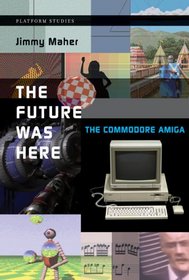Search -
The Future Was Here: The Commodore Amiga (Platform Studies)
The Future Was Here The Commodore Amiga - Platform Studies
Author:
Long ago, in 1985, personal computers came in two general categories: the friendly, childish game machine used for fun (exemplified by Atari and Commodore products); and the boring, beige adult box used for business (exemplified by products from IBM). The game machines became fascinating technic... more »
Author:
Long ago, in 1985, personal computers came in two general categories: the friendly, childish game machine used for fun (exemplified by Atari and Commodore products); and the boring, beige adult box used for business (exemplified by products from IBM). The game machines became fascinating technic... more »
ISBN-13: 9780262017206
ISBN-10: 0262017202
Publication Date: 4/20/2012
Pages: 344
Rating: ?
ISBN-10: 0262017202
Publication Date: 4/20/2012
Pages: 344
Rating: ?
0 stars, based on 0 rating
Genres:
- Computers & Technology >> Web Development & Design >> Web Design
- Computers & Technology >> Hardware & DIY >> PCs
- Humor & Entertainment >> Puzzles & Games >> Video & Computer Games
- Nonfiction >> Social Sciences




